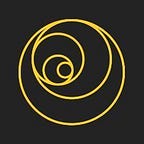Can Science Tell Us What Beauty Is?
Neuroscientist Anjan Chatterjee takes us into the neurology of creativity
By Gayil Nalls
“Have you ever had the experience of being so absorbed by a painting or a piece of music,” writes Anjan Chatterjee in his 2013 book The Aesthetic Brain, “that you lose all sense of space and time? These magical moments … are ironically deeply subjective. The problem, of course, is that science demands some objectivity.”
Chatterjee’s interest in aesthetic experience began in his childhood in India, where he mastered one of the oldest forms of human expression at a young age. He started to draw with a concentrated passion when he was 6 years old. In 1980, Chatterjee graduated from Haverford College with a major in philosophy. It was while at medical school that he discovered his love for reading neuroscience. “Not to pass tests,” he said, “but because I actually wanted to know the information. That was the first clue that I would want to train in the clinical neurosciences.”
His instrument of choice evolved from a pencil to a camera in 1989, when he finished his neurology residency and, for the first time in eight years, found time to again respond creatively to his observations and insights. Now, he says, “I photograph many things — street, landscapes, abstracts. I believe…
